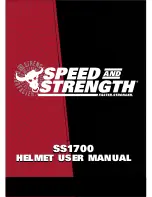
General Information
57
Daily Safety Checks
Warning
Failure to perform these checks every
day before you ride may result in
serious motorcycle damage or an
accident causing serious injury or
death.
Check the following items each day
before you ride. The time required is
minimal, and these checks will help
ensure a safe, reliable ride.
If any irregularities are found during
these checks, refer to the Maintenance
and Adjustment section or see your
authorised Triumph dealer for the action
required to return the motorcycle to a
safe operating condition.
Check:
Fuel:
Adequate supply in tank, no fuel
Engine Oil:
Correct level on dipstick or
shown in sight glass. Add correct
specification oil as required. No leaks
from the engine or oil cooler (see
).
Drive Chain:
Correct adjustment (see
Tyres/Wheels:
Correct inflation pressures
(when cold). Tread depth/wear, tyre/
wheel damage, loose/broken spokes,
).
Nuts, Bolts, Fasteners:
Visually check
that steering and suspension compo-
nents, axles, and all controls are properly
tightened or fastened. Inspect all areas
for loose/damaged fixings.
Steering Action:
Smooth but not loose
from lock to lock. No binding of any of
).
Brakes:
Pull the brake lever and push
the brake pedal to check for correct
resistance. Investigate any lever/pedal
where the travel is excessive before
meeting resistance, or if either control
feels spongy in operation (see page
Brake Pads:
Check that the correct
amount of friction material is remaining
on all the brake pads (see page
Brake Fluid Levels:
No brake fluid
leakage. Brake fluid levels must be
between the MAX and MIN marks on
both reservoirs (see page
Front Forks:
Smooth action. No fork oil
leakage (see page
).
Throttle:
Make sure that the throttle
grip returns to the idle position without
).
Clutch:
Smooth operation and correct
cable free play (see page
Coolant:
No coolant leakage. Check the
coolant level in the expansion tank
(when the engine is cold) (see page
Electrical Equipment:
All lights and horn
).
Engine Stop:
Engine start/stop switch
turns the engine OFF when the switch is
moved to the STOP position (see
Stands:
Returns to the fully up position
by spring tension. Return springs not
















































